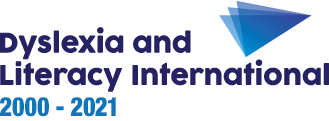Inclusion of the child is a fundamental right. Children with dyslexia must be brought into the centre of the classroom, their confidence restored and self-motivation developed. A supportive network should be set up.
There is no single approach which will benefit all dyslexic learners, as they each have an individual profile of strengths and needs. However, in alphabetical languages like English, phonic approaches are considered to be very effective. The teacher should ensure that the phonics programme used is structured, multi-sensory and taught in a sequential manner, and combines:
- the explicit teaching of phonemic awareness, and
- the explicit teaching of the alphabetical principle, through the systematic teaching of the correspondences between ‘letters’ and ‘sounds’.
Multisensory techniques are the most effective for teaching phonemic awareness, ‘letter’-‘sound’ correspondences, reading, spelling, comprehension and composition.
Multisensory methods have the following seven characteristics which should be reflected in lesson plans:
- they must be structured
- they must be cumulative and progressive
- they are always centred on phonological analysis
- they develop and train memory
- they are metacognitive, that is pupils are encouraged to think about how they learn and solve problems
- they are direct, with explicit links
- they are diagnostic, adapted to the particular needs of the child
There are numerous tools and techniques for putting this into practice, for example:
- use of an alphabet in wood or plastic
- creating multi-sensorial links between ‘letters’ and ‘sounds’
- use of reading cards and spelling cards
- use of multisensory routines for teaching the reading and spelling of regular and irregular words
- teaching of cursive writing
- encouraging the finding of ‘families’ of sounds and symbols
- use of mnemonics
- visualization methods and mind-mapping for comprehension and composition
Children with problems of memory, concentration and organisation in time and place require special help. Colour-coding elements of the classroom timetable and lists of articles required for each lesson are useful.
Carefully selected technology aids and software are beneficial.
It is important to appreciate and respond to the learning styles of individual children.


